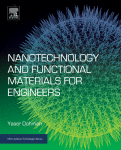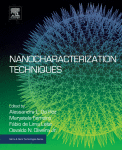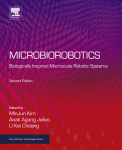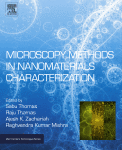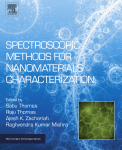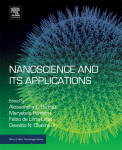Functionalized Nanomaterials for the Management of Microbial Infection A Strategy to Address Microbial Drug Resistance A volume in Micro and Nano Technologies 1st edition by Rabah Boukherroub, Sabine Szunerits, Djamel Drider 0323417372 9780323417372
$50.00 Original price was: $50.00.$25.00Current price is: $25.00.
Functionalized Nanomaterials for the Management of Microbial Infection. A Strategy to Address Microbial Drug Resistance. A volume in Micro and Nano Technologies 1st edition by Rabah Boukherroub, Sabine Szunerits, Djamel Drider – Ebook PDF Instant Download/DeliveryISBN: 0323417372, 9780323417372
Full download Functionalized Nanomaterials for the Management of Microbial Infection. A Strategy to Address Microbial Drug Resistance. A volume in Micro and Nano Technologies 1st edition after payment.
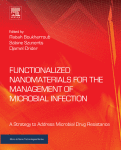
Product details:
ISBN-10 : 0323417372
ISBN-13 : 9780323417372
Author: Rabah Boukherroub, Sabine Szunerits, Djamel Drider
Functionalized Nanomaterials for the Management of Microbial Infection: A Strategy to Address Microbial Drug Resistance introduces the reader to the newly developing use of nanotechnology to combat microbial drug resistance. Excessive use of antibiotics and antimicrobial agents has produced an inexorable rise in antibiotic resistance in bacterial pathogens.
The use of nanotechnology is currently the most promising strategy to overcome microbial drug resistance. This book shows how, due to their small size, nanoparticles can surmount existing drug resistance mechanisms, including decreased uptake and increased efflux of the drug from the microbial cell, biofilm formation, and intracellular bacteria. In particular, chapters cover the use of nanoparticles to raise intracellular antimicrobial levels, thus directly targeting sites of infection and packaging multiple antimicrobial agents onto a single nanoparticle.
Functionalized Nanomaterials for the Management of Microbial Infection. A Strategy to Address Microbial Drug Resistance. A volume in Micro and Nano Technologies 1st Table of contents:
Chapter 1. Resistance to Antibiotics and Antimicrobial Peptides: A Need of Novel Technology to Tackle This Phenomenon
Abstract
1.1 Resistance to Antibiotics
1.2 Resistance to Bacteriocins Produced by Gram-Positive Bacteria (GPB)
1.3 Conclusion and Prospects
Acknowledgments
References
Chapter 2. The Role of the Food Chain in the Spread of Antimicrobial Resistance (AMR)
Abstract
2.1 Introduction
2.2 AMR in Foodborne Pathogenic Bacteria
2.3 AMR in Food-Related Beneficial Microbes
2.4 Routes of Transmission of AMR Throughout the Food Chain
2.5 Conclusions
References
Chapter 3. Penetrating the Bacterial Biofilm: Challenges for Antimicrobial Treatment
Abstract
3.1 Introduction
3.2 How Biofilms Pose a Challenge to the Diffusion of Antibiotics
3.3 How to Improve Antibiotic Delivery to Biofilm Cells?
3.4 Conclusion
References
Chapter 4. Metal Nanoparticles for Microbial Infection
Abstract
4.1 Introduction
4.2 Silver Nanoparticles for Microbial Infection
4.3 Copper Nanoparticles for Microbial Infection
4.4 Gold Nanoparticles for Microbial Infection
4.5 Safety Considerations
4.6 Conclusion
References
Chapter 5. Lipid-Based Nanopharmaceuticals in Antimicrobial Therapy
Abstract
5.1 Nanopharmaceuticals
5.2 Lipid-Based Nanopharmaceuticals
5.3 Antimicrobial Therapy of Interest
5.4 Potential of Nanopharmaceuticals in Treatment of Microbial Infections
5.5 Potential of Lipid-Based Nanopharmaceuticals for Antimicrobial Therapy Related to Route of Administration
5.6 Toxicity
5.7 Current Limitations
5.8 Perspectives
5.9 Conclusions
References
Chapter 6. Organic Polymeric Nanomaterials as Advanced Tools in the Fight Against Antibiotic-Resistant Infections
Abstract
6.1 Introduction: Antibiotic Resistance—A Global Threat to Public Health
6.2 Nanoantibiotics—A New Paradigm to Fight Against Antibiotic Resistance Bacteria
6.3 Polymeric Architectures Relevant to Drug Delivery Applications
6.4 Types, Structures, and Supramolecular Morphologies of Polymeric Nanocarriers
6.5 Methods for Preparation of Drug-Loaded Polymeric Nanoparticles
6.6 Polymer-Based Nanomaterials for Antiinfectious Therapy
6.7 Concluding Remarks and Future Perspectives
References
Chapter 7. Bacteriocins and Nanotechnology
Abstract
7.1 Introduction
7.2 Stability of Bacteriocins
7.3 Immune Response to Bacteriocins
7.4 Preclinical Trials Conducted on Bacteriocins
7.5 Delivery Systems
7.6 Conclusions
References
Chapter 8. Graphene-Microbial Interactions
Abstract
8.1 Introduction
8.2 Graphene, Graphene Oxide (GO) and Reduced Graphene Oxide (rGO): Production and Characterization
8.3 Inhibition of Bacterial Attachment and Antibacterial Activity of Graphene-Coated Surfaces
8.4 Interaction of GO and rGO With Bacteria in Suspension
8.5 Antibacterial Activity of Nanoparticle Decorated GO and rGO
8.6 Conclusion and Perspectives
People also search for Functionalized Nanomaterials for the Management of Microbial Infection. A Strategy to Address Microbial Drug Resistance. A volume in Micro and Nano Technologies 1st:
green functionalized nanomaterials for environmental applications
handbook of functionalized nanomaterials for industrial applications
biomedical applications of functionalized nanomaterials
additive manufacturing with functionalized nanomaterials
functionalized nanomaterials for biosensing and bioelectronics applications
Tags: Functionalized Nanomaterials, the Management, Microbial Infection, Strategy, Address Microbial, Drug Resistance, Micro, Rabah Boukherroub, Sabine Szunerits, Djamel Drider
You may also like…
Engineering
Engineering
Nanoscience and its Applications A volume in Micro and Nano Technologies Osvaldo Novais De Oliveira






